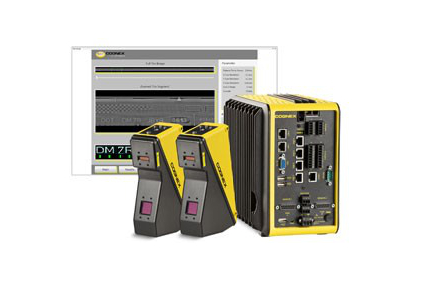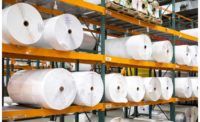3D sensor portfolio expands
Three new Cognex models, ease-of-use software and vision tool advances for DS1000 series 3D laser displacement sensors

Cognex Corporation (cognex.com) announces an expanded portfolio of 3D laser displacement sensors, an industrial vision controller, and powerful new 3D vision tools. The DS1050, DS1101, and DS1300 sensors address an unprecedented variety of 3D applications demanding high resolution and expanded measurement range.
The DS1000 series now comes bundled with the new Cognex VC5 vision controller, delivering a complete solution to meet the most challenging 3D requirements. The VC5 can control up to four 3D sensors, as well as factory-floor communications. It comes pre-installed with Cognex Designer™, a new easy-to-configure software framework that simplifies the development of 3D applications and creation of a professional-looking graphical user interface.
The DS1000 Series now also offers an expanded selection of advanced vision tools. In addition to proven 2D vision tools PatMax™, IDMax™, and OCRMax™, the DS1000 Series now offers 3D tools such as 3D height, plane fitting, plane-to-plane angle, volume, and cross section. This combination gives the DS1000 series the power to successfully perform virtually all 3D inspections – delivering sub-micron measurement and addressing contrast-independent OCR and presence/absence applications.
“Our expanded 3D sensor portfolio allows our customers to benefit from world-class Cognex 3D and 2D vision tools for higher resolution and larger field-of-view,” says Joerg Kuechen, vice president and business unit manager, Vision Products. “The Cognex Designer software turns complex machine-vision requirements into easily maintainable solutions and makes creating and deploying complete solutions for the most challenging 3D applications faster than ever without the assistance of a skilled programmer.”
The DS1000 series of 3D displacement sensors uses laser triangulation to extract 3D information from the parts it scans. Displacement sensors allow precision inspection of parts regardless of contrast or
lighting conditions. The DS1000 series is factory-calibrated for fast, consistent mounting and eliminates the need to go through a calibration procedure or pixel conversion process to acquire precision measurements in real-world units.
Looking for a reprint of this article?
From high-res PDFs to custom plaques, order your copy today!







